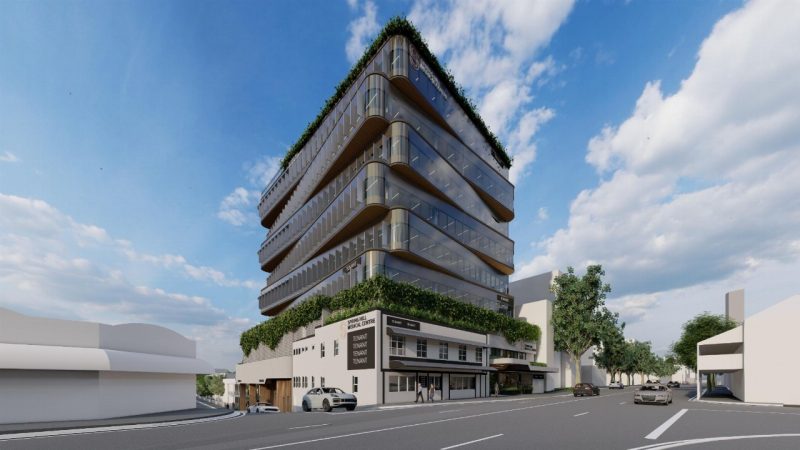- The life sciences real estate is forecast to have enormous growth potential with Melbourne being ranked as one of the top five hubs in Asia Pacific, according to CBRE
- The growth potential in the Asia Pacific region is owing to the region’s large — and in some markets ageing — population, low health expenditure and a rise in pharmaceutical research and development
- Melbourne is well placed due to its advanced and innovative pharmaceutical and medical technology product manufacturing, strong logistics networks, and university-backed research capabilities
- the CBRE report says the nascent life sciences real estate market has significant growth potential in the Asia Pacific sector
The life sciences real estate sector, which includes the pharmaceutical, biotechnology, medical equipment, food science and healthcare sectors, is forecast to have enormous growth potential.
According to a recent CBRE study on the rising occupier and investor demand for specialised life sciences real estate, Melbourne has been classified as one of the top five life sciences centres in Asia Pacific.
The report, titled ‘A New Era of Life Sciences Growth: Opportunities for Occupiers and Investors’, focuses on key trends, demand drivers, corporate real estate strategies and investment opportunities as macro-trends propel the industry into a fresh phase of expansion.
The industries growth potential in the Asia Pacific region is owing to the region’s large — and in some markets ageing — population, low health expenditure and a rise in pharmaceutical research and development.
The Intergenerational Report has forecasted an older Australia, with 23 per cent of the population expected to be aged over 65 by 2061.
This promise is already being realised, with organic growth and flight-to-quality relocations driving a 17.4 per cent year-on-year increase in the volume of life sciences office leasing in Asia Pacific in 2020, compared to a 25 per cent drop in the broader Asia Pacific leasing market.
CBRE’s research also rates the competitiveness of the region’s leading life sciences centres and notes a fast surge in investor interest in the industry, which has been bolstered by a stronger focus on R&D since the start of the COVID-19 pandemic.
This places Melbourne among the top five Asia Pacific hubs due to its advanced and innovative pharmaceutical and medical technology product manufacturing, strong logistics networks, and university-backed research capabilities, with the University of Melbourne ranked second globally for university-related biomedical research.
In addition, the city attracts 40 per cent of national medical funding and is home to 41 per cent of all Australian life sciences businesses.
“Australia is on track to becoming a world leading life sciences hub, driven by technological advancements in biotechnology and support from the Federal Government, which has identified the life sciences sector as a strategy priority, particularly in a post COVID world,” CBRE Pacific head of capital markets Mark Coster said.
“Australia’s world class healthcare system and an established network of highly regarded universities and research institutions have ensured the country’s appeal to global life sciences companies, with established clusters in Sydney’s Macquarie Park, Parkville in Victoria and expanding hubs in Brisbane, Perth, Adelaide and the Gold Coast.
“This is underpinning investor interest in life sciences real estate, as highlighted by Sigma Pharmaceuticals 2020 sale of cold storage facilities in Brisbane and Sydney to LOGOS Property for $172 million and Charter Hall’s recent $106 million acquisition of GlaxoSmithKline’s life sciences campus at Boronia in Melbourne’s east.”
Dexus has also entered the fray through its unlisted healthcare property fund, spending $140 million to acquire two buildings in Parkville last month as well as the most recent acquisition of two sites in Brisbane’s health precincts Spring Hill and Herston for $130.7 million.
The life sciences sector in Australia is concentrated in the established clusters of Macquarie Park in New South Wales and Parkville in Victoria, with emerging precincts developing in Brisbane, Adelaide, Perth, and the Gold Coast.
CBRE APAC head of investor thought leadership and head of research Dr Henry Chin said while the life sciences real estate sector is at a nascent stage of development, there is significant potential.
“Particularly in the Asia Pacific region, where life sciences transactions account for less than 1 per cent of annual investment activity, compared to circa 4 per cent of deal activity globally,” he said.
“The obvious entry route is via sale and leasebacks as multinational pharmaceutical companies recycle capital for R&D activities or offload non-essential assets following mergers and acquisitions.
However, we expect other opportunities will include converting older industrial properties into laboratories or cold storage facilities as well the construction of modern life science facilities under public-private partnership (PPP) frameworks across the region.”

